Vitré to Le Bourgneuf-la-Forêt
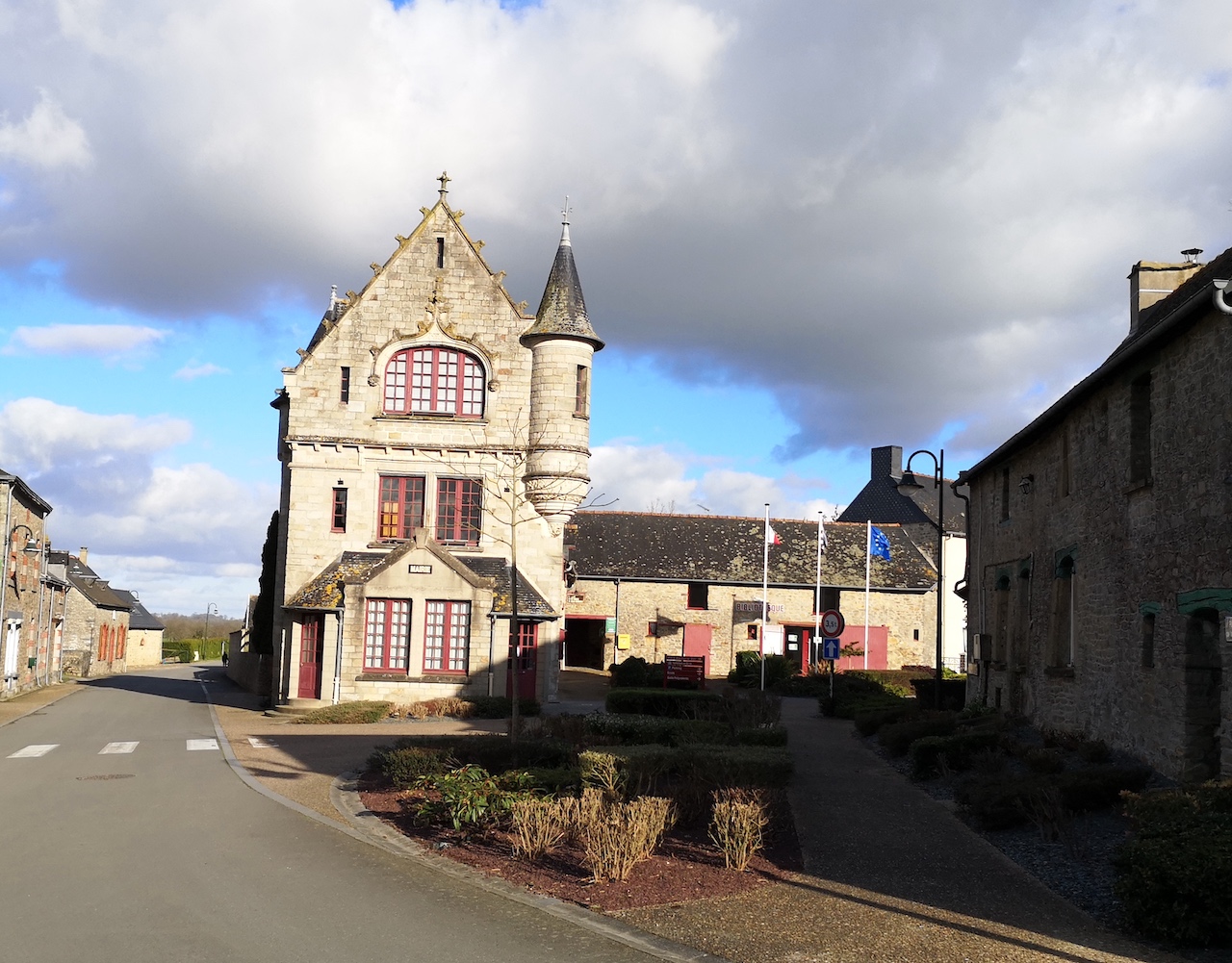
Bretagne
1. Vitré to Le Bourgneuf-la-Forêt
Medium
6h12
24,8km
+368m
-318m
Step
Embed this item to access it offline
A fairly hilly stage whose gradient is constantly increasing until the finish in Bourgneuf-La-Forêt. At the beginning of the route, we are on the Red and White markers until the Plan d'Eau de la Haute Vilaine.
9 points of interest
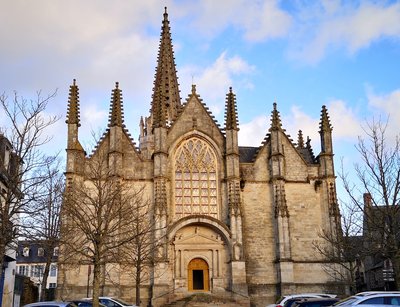
Église Notre-Dame, façade - Amis saint Colomban TouristNotre-Dame Church of Vitré
The present appearance of the Church of Our Lady, which was rebuilt between about 1440 and 1580, is that of the 15th and 16th centuries. As a transitional building between the late Middle Ages and the early Renaissance, it adapted to changing taste: in the flamboyant Gothic decor, Renaissance ornamental motifs are discernible (left side of the south façade).
We are in the presence of a so-called "multi-gabled" church: the multiplication of the gables on the aisles, pierced by wide windows, allows the light to shine more broadly on a building without high windows.
The main facade, on the west side, is less elaborate than the one on the south side. It was in fact masked by the Great Cloth Hall, made of wood, which was replaced after the fire of 1886 by a butter hall made of cast iron and bricks, destroyed in the 1960s.
Source website of the town of Vitré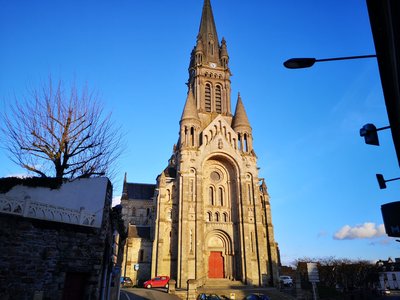
Église Saint-Martin à Vitré - Amis saint Colomban TouristSaint-Martin Church in Vitré
The present St. Martin's Church is in neo-Romanesque style. It remains to this day the most important neo-Romanesque building in Ille-et-Vilaine. Construction began in 1883 and the building was consecrated in 1895. It is likely that its framework is made of metal, a framework to which rubble was grafted. This technique, practiced since the 1850s, had the triple advantage of a fast, inexpensive and solid construction.
Vitré, Vieux Saint-Martin, Entrée du cimetière - Amis saint Colomban TouristThe Old Saint Martin's Tower in Vitré
St. Martin's Church was not yet erected as a parish at the beginning of the 15th century. It was however in the centre of one of the first vitreous suburbs, as early as the end of the 11th century. It was destroyed at the end of the 1880s, while a new St. Martin's Church was built further south and west. However, the old bell tower, known as the Tour du Vieux-Saint-Martin, was preserved.
Together with the three other bell towers of the town, with the high towers of the castle and that of the Bridole, it is one of the monuments that give Vitré its very special silhouette.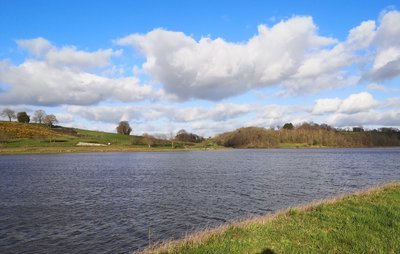
Plan d'eau de la Haute Vilaine - Amis saint Colomban PanoramicPond of the Haute Vilaine
Launched in 1982, the role of the Haute Vilaine water body is to protect the Rennes agglomeration against winter floods. It also provides a reserve of drinking water for the Rennes and Vitré basins and supports low water flows to ensure the quality of La Vilaine's water during the summer.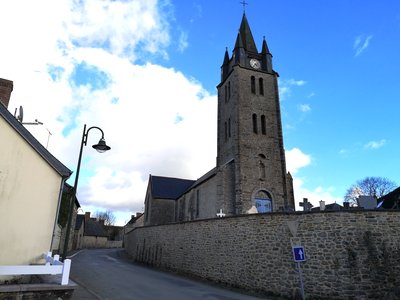
Église Saint-Ouen à La Chapelle-Erbée - Amis saint Colomban TouristÉglise Saint-Ouen Church il La Chapelle-Erbrée
The present parish church was built from 1841 by the architect Charles Langlois15 , its tower being completed in 1843; it was blessed on 15 May 1844 by Mgr de Saint-Marc, Archbishop of Rennes. Its choir, in the form of a polygonal apse, was rebuilt in 1872.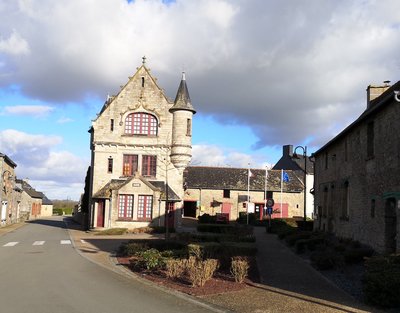
Mairie de La Chapelle Erbée - Amis saint Colomban TouristLa Chapelle-Erbrée Town Hall
In 1905, Mr. Mellet, the architect of the castles of the Vitré region, erected at La Chapelle-Erbrée a surprising building in this rural village with no significant Gothic heritage.
It is in the style of a neo-Gothic edifice, used since the end of the 19th century in medieval towns with a rich past such as Vitré, Fougères, Redon or Saumur.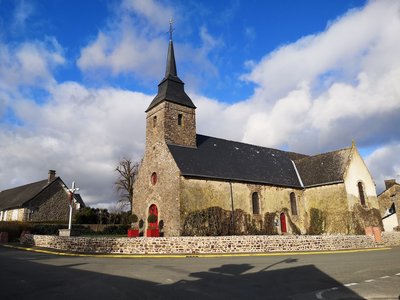
Église Sainte-Trinité à Launey-Villiers - Amis saint Colomban TouristSainte-Trinité Church in Launay-Villiers
The building was built in 1636.
The church has a Latin cross plan. In the 19th century, the flat chevet of the choir is decorated with a five-sided sacristy and the bell tower was built. On the facades, René Godard's coat of arms is sculpted in a roundel on granite shields.
If the church is open visit the interior with the Monument to the Dead of the Great War.
L’entrée du château de Villiers - Amis saint Colomban TouristChâteau de Villiers in Launay-Villiers
Built in 1857, this castle is made of coated stone.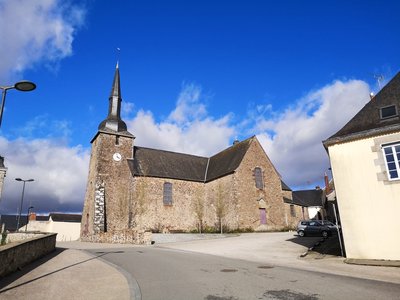
Église Saint-Martin à Bourgneuf-la-Forêt - Amis saint Colomban TouristSaint-Martin Church in Le Bourgneuf-la-Forêt
The very modest church has a magnificent bell tower which enhances if the church is open discover its statuary and painted wooden ceiling and a beautifully decorated interior.
Description
In front of the church Notre-Dame de Vitré on the left and on the right on promenade du Val, red and white markings, go down to cross La Vilaine, chemin de Plaisance on the right chemin de Villaudin
- On the right, leave Chemin de Villaudin, cross the Vitré bypass D 179, turn right along the bypass for a few metres, at the crossroads on the right.
- Turn left at the crossroads with D 130, after the farms take a field road on the right, signposted in red and white, first path on the left, in front of the hedge of trees on the right, on the right at the crossroads with D 277, first road on the left for a few metres.
- Go down path on the right, cross the Roche Blossac, straight ahead, right at the crossroads in the wood, straight ahead on asphalt road, 90° path on the left, first path on the right, red and white markings.
- Turn right at the crossroads with tarmac road, left at the second crossroads straight ahead, signposted in red and white, follow La Vilaine.
- On the right to take the dam you leave the red and white markings, follow the water, leave the waterfront stay on tarmac road, rue du Lac, straight ahead to La Chapelle-Erbée, rue du Bourg-Neuf, left at the crossroads with D 34
- At the crossroads with D 106 in Hameau La Brécinière, straight ahead on D 123 at the next crossroads turn right on D 158 direction Launay-Villiers, turn left on D 279 direction Launay-Villiers, route de la Rabine, left in front of the church D 279 route des Étangs, straight ahead on D 279
- Turn right at the junction with D 123 route de Vitré, rue de Bretagne, after the car park on the left first street on the left rue du Temple straight ahead between the houses you arrive at Place de l'Eglise.
- Departure : Notre-Dame Church, place Notre-Dame, 35 500 Vitré
- Towns crossed : Bretagne and Pays de la Loire
Altimetric profile
Report a problem or an error
If you have found an error on this page or if you have noticed any problems during your hike, please report them to us here:






